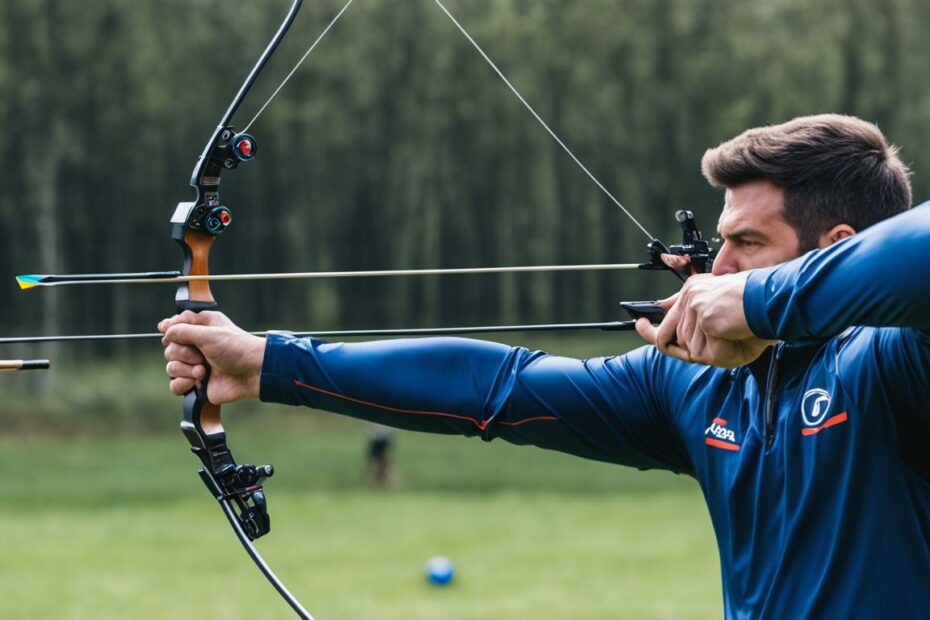A clicker is a small tool attached to a recurve bow that helps archers improve their accuracy and precision. It is essential to know when to use a clicker on a recurve bow to maximize its benefits.
A clicker is particularly important for top-level archers who must hit targets up to 90 meters away. The clicker makes an audible click when the draw length is at the correct position, signaling the archer to release the string. This helps maintain consistent draw length, leading to improved accuracy in shots.
However, before incorporating a clicker into your setup, it is essential to have a solid and consistent archery form. This includes evaluating your draw length and mastering other aspects of your shot process, such as stance, posture, head position, anchor, and grip.
Once you have developed a consistent and repeatable shot process, consider using a clicker on your recurve bow. Having someone assess if you consistently hit the same draw length within a small range is recommended before utilizing a clicker.
Benefits of Using a Clicker on a Recurve Bow
Using a clicker on a recurve bow offers several benefits. First and foremost, it promotes consistency in draw length, which is paramount for accurate shooting, particularly at longer distances.
Furthermore, a clicker helps archers develop muscle memory and a consistent shot execution process. The audible click triggers the release, assisting archers to maintain a smooth and controlled shot. This ensures that the release of the string is consistent, reducing variations in arrow flight and improving overall precision.
Incorporating a clicker into your recurve bow setup can significantly enhance your shooting technique. The consistent draw length and improved shot execution that come with using a clicker can lead to higher scores and better performance in competitions and practice sessions.
To summarize, the benefits of using a clicker on a recurve bow include:
- Promotes consistency in draw length for accurate shooting
- Develops muscle memory and a consistent shot execution process
- Improves overall precision and reduces variations in arrow flight
- Enhances shooting technique and performance
When to Start Using a Clicker on a Recurve Bow
The decision of when to start using a clicker on a recurve bow depends on your level of experience and the consistency of your archery form.
It is recommended to have a solid foundation of archery skills before incorporating a clicker. This includes mastering aspects such as stance, posture, head position, anchor, and grip.
Once you have developed a consistent and repeatable shot process, you can evaluate your draw length to determine if a clicker would benefit you.
Having someone take a video of you shooting and assessing if you are consistently hitting the same draw length within a small range is essential.
If you cannot achieve consistent draw length, it is best to continue working on your form before introducing a clicker into your setup.
Using a clicker too early, before establishing proper form, can lead to relying on the clicker as a crutch rather than developing the necessary muscle memory and shot execution skills.
Building a strong foundation will result in better accuracy and precision when using a clicker on your recurve bow.
Benefits of Mastering Archery Form Before Incorporating a Clicker
- Ensures consistent and repeatable shot process
- Develops muscle memory for a controlled and smooth release
- Promotes accuracy and precision through consistent draw length
- Prevents reliance on the clicker as a crutch
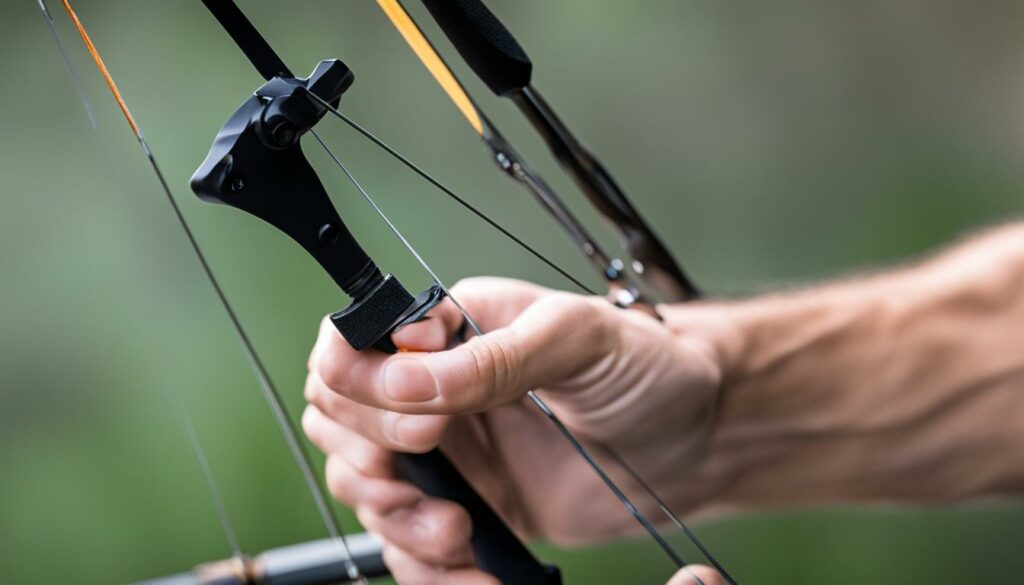
| Level of Archery Form | Recommended Time to Start Using a Clicker |
|---|---|
| Beginner | After achieving consistent form and draw length for at least 3-6 months of regular practice. |
| Intermediate | Once you have mastered the basics of archery form and consistently hit the desired draw length for at least 6-12 months. |
| Advanced | Once you have developed a high level of consistency, accuracy, and precision in your shooting, you can consistently hit the same draw length within a small range. |
Using a Clicker on a Recurve Bow: Tips and Techniques
When using a clicker on a recurve bow, there are a few tips and techniques to keep in mind. First, adjusting the clicker position correctly for your draw length is crucial. Fine-tuning may be required with the assistance of a friend or coach. Set the clicker to activate when there is about 1/4 inch remaining in the draw, ensuring a consistent release.
While the clicker’s auditory cue is important, relying on tactile feedback is equally essential. Feeling the slight vibration caused by the clicker can help ensure a controlled release.
To reduce auditory distractions, consider practicing with the clicker while using earbuds or headphones, enabling you to focus more on the clicker’s vibrations.
Incorporating drills like the click conditioning drill can help develop a better feel for the clicker and enhance overall shot consistency. This drill involves repeatedly drawing the bow to the clicker’s activation point without releasing the arrow, allowing you to build muscle memory and fine-tune your timing.
Example of a Click Conditioning Drill:
- Stand at a comfortable shooting distance from the target.
- Draw the bow, paying close attention to the clicker’s activation point.
- Hold the draw for a few seconds, feeling the clicker engage.
- Slowly, let down without releasing the arrow.
- Repeat this process multiple times, focusing on maintaining consistency and controlling your release.
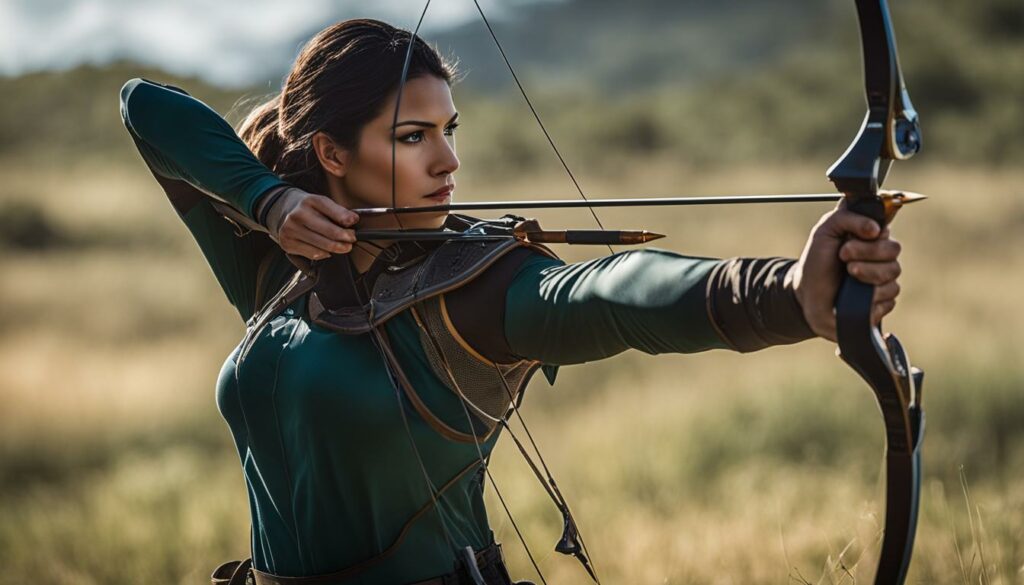
Developing proficiency with a clicker takes time and practice. Be patient with yourself as you work on refining your technique.
Remember to focus on smooth and fluid movement, minimal tension, and developing clicker control. Regular practice and incorporating various drills will lead to improved consistency and a more precise shot execution.
Benefits of Shooting Without a Clicker on a Recurve Bow
Shooting without a clicker lets you focus on your entire shooting form, including posture, head position, shot feeling, and the complete shot process. It forces you to evaluate your draw length and ensure consistency without relying on the auditory cue of the clicker.
Shooting without a clicker can help you better understand your technique and address any form issues that may arise. It is recommended to periodically shoot without a clicker to maintain a well-rounded approach to your archery practice.
Shooting without a clicker on a recurve bow provides a unique opportunity to fine-tune your form and enhance your archery skills. This heightened awareness of your technique allows you to make adjustments and improvements, leading to greater accuracy and consistency in your shooting.
Furthermore, shooting without a clicker encourages a deeper connection between the archer and their bow. Without the clicker’s guidance, you rely more on your senses and intuition to determine the right moment to release the string. This increased awareness and alignment with your equipment can lead to a more instinctive and fluid shooting style.
Additionally, shooting without a clicker helps you build mental resilience and flexibility. It challenges you to adapt to varying shooting conditions, such as different distances or shooting angles, without a consistent draw length indicator. This adaptability can be crucial in tournament situations where you may encounter unexpected challenges.
| Benefits of Shooting Without a Clicker on a Recurve Bow |
|---|
| Allows you to focus on your entire shooting form, including posture, head position, shot feeling, and the complete shot process. |
| Forces you to evaluate your draw length and ensure consistency without relying on the auditory cue of the clicker. |
| Helps you develop a better understanding of your technique and address any form issues that may arise. |
| Provides an opportunity to fine-tune your form and enhance your archery skills. |
| Builds a deeper connection between the archer and their bow. |
| Increases mental resilience and adaptability in varying shooting conditions. |
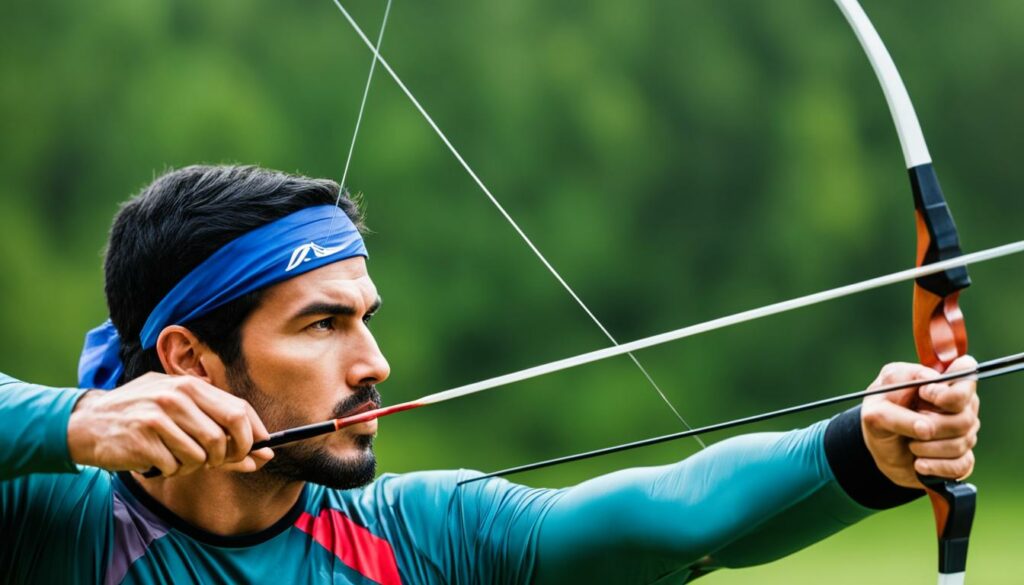
Different Types of Clickers for Recurve Bows
Riser-Mounted Clicker
The riser-mounted clicker is the most commonly used type for recurve bows. It is designed to attach directly to the bow’s riser and features an arm that extends toward the arrow shelf. As the arrow tip passes the clicker arm, it hits the riser, producing an audible click. This type of clicker offers simplicity and ease of installation.
Bow sight-Mounted Clicker
The bowsight-mounted clicker is an alternative option that mounts directly to the bowsight. It offers more adjustability for different arrow lengths, making it particularly useful for archers shooting longer arrows or those still growing. With the bowsight-mounted clicker, the archer can fine-tune the clicker position to suit their needs.
Limb-Mounted Clicker
For traditional archers, the limb-mounted clicker is a popular choice. This clicker attaches to the bow’s limb using double-sided tape and connects to the bowstring with a cord.
When the archer pulls the cord tight, a tab on the clicker flexes and produces an audible click. The limb-mounted clicker offers simplicity and compatibility with traditional archery setups.
Ultimately, the choice of clicker type depends on personal preference, shooting style, and specific requirements. It’s essential to consider factors such as ease of installation, adjustability, and compatibility with your recurve bow.
Now that we have explored the different clicker options let’s move on to understanding how to set up and adjust a clicker for optimal performance.
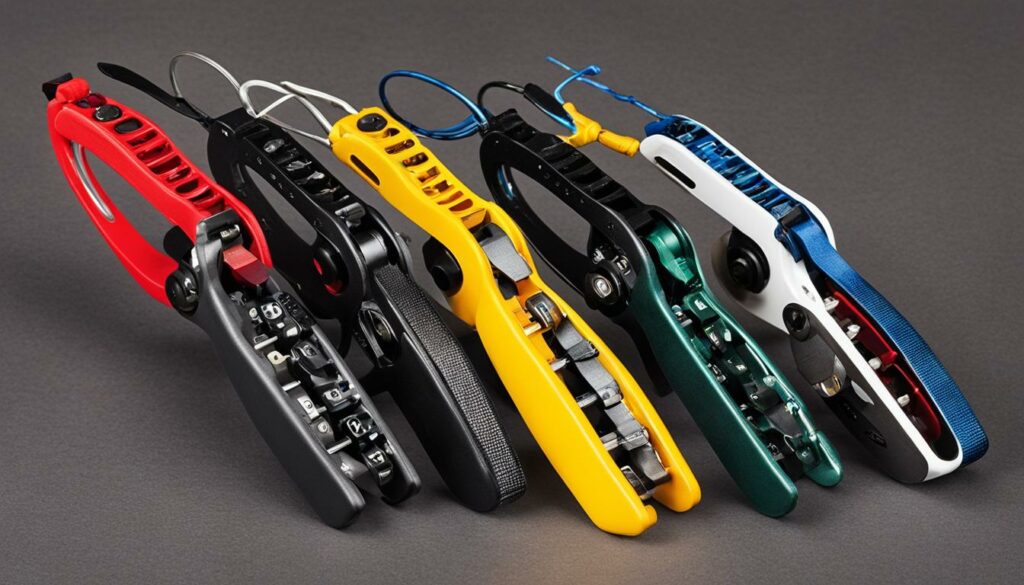
Setting Up and Adjusting a Clicker
Setting up and adjusting a clicker on a recurve bow is a crucial step to ensure its optimal performance. Similar to changing a sight, the proper positioning of the clicker is crucial for consistent timing and control during release.
To begin, setting the clicker close to the arrow point’s position at full draw is recommended. This initial setting can be fine-tuned with a friend or coach who can provide feedback and guidance.
The clicker should be positioned in such a way that there is approximately 1/4 inch remaining in the draw when it goes off. This allows for consistent timing and facilitates a controlled and precise release.
A proper technique to determine the average position of the arrow point to the clicker is to perform several draw-ups with closed eyes while a friend or coach observes. This observation ensures the clicker is consistently positioned at the desired spot, enhancing shot consistency.
Once the initial setup is complete, further adjustments can be made to achieve the desired clicker position. When making these adjustments, it is essential to consider personal shooting style and preferences.
Developing Clicker Control and Fine-Tuning Technique
Some various drills and exercises can help improve your clicker technique. Shooting with increased draw weight challenges your muscles and trains them to adapt to higher poundages, enhancing control and stability.
Performing clicker conditioning and extension drills can enhance timing and coordination, allowing for a more consistent clicker response.
Additionally, varying the timing of certain shot parts, such as the anchor point or follow-through, can help refine your clicker technique.
While using a clicker is beneficial, periodically shooting without one is also essential. This allows you to assess and maintain consistency in your form and technique.
Shooting without a clicker enables you to focus on your shot process, from your posture to your shot feeling, ensuring that all aspects are aligned and harmonious.
FAQ
When should I use a clicker on a recurve bow?
A clicker on a recurve bow is recommended for archers with a solid archery skill foundation and consistent form. It helps promote constant draw length and improved accuracy, especially for longer-distance shooting.
What are the benefits of using a clicker on a recurve bow?
Using a clicker on a recurve bow promotes consistency in draw length, develops muscle memory, and enhances shot execution. It improves accuracy and precision in archery, particularly for longer-distance shooting.
When should I start using a clicker on a recurve bow?
It is recommended to start using a clicker on a recurve bow once you have mastered the fundamentals of archery and developed consistent form. It is essential to have a solid and repeatable shot process before incorporating a clicker into your setup.
What are some tips and techniques for using a clicker on a recurve bow?
It is crucial to adjust the clicker position correctly to ensure it activates at the correct draw length. Relying on both the auditory click and the tactile feedback is essential. Practicing with earbuds or headphones can help reduce auditory distractions. Drills like the click conditioning drill can also aid in developing a better feel for the clicker.
What are the benefits of shooting without a clicker on a recurve bow?
Shooting without a clicker lets you focus on your entire shot process and evaluate your technique. It helps improve your understanding of your form and address any issues that may arise. Shooting without a clicker periodically maintains a well-rounded approach to your archery practice.
What are the different types of clickers available for recurve bows?
There are riser-mounted clickers, bowsight-mounted clickers, and limb-mounted clickers. The choice depends on personal preference and specific needs, such as arrow length and shooting style.
How do I set up and adjust a clicker on a recurve bow?
The clicker should be initially set close to the arrow point position at full draw, with about 1/4 inch remaining before it activates. Fine-tuning the position can be done with the help of a friend or coach. Performing draw-ups with closed eyes can aid in determining the average position for consistency.
How can I develop clicker control and fine-tune my technique?
Starting with a manageable poundage is recommended. Working on dynamic and fluid movement with minimal tension can improve clicker control. Various drills and exercises, such as shooting with increased draw weight and performing clicker conditioning drills, can help enhance clicker technique. Shooting without a clicker periodically can also aid in evaluating technique.
